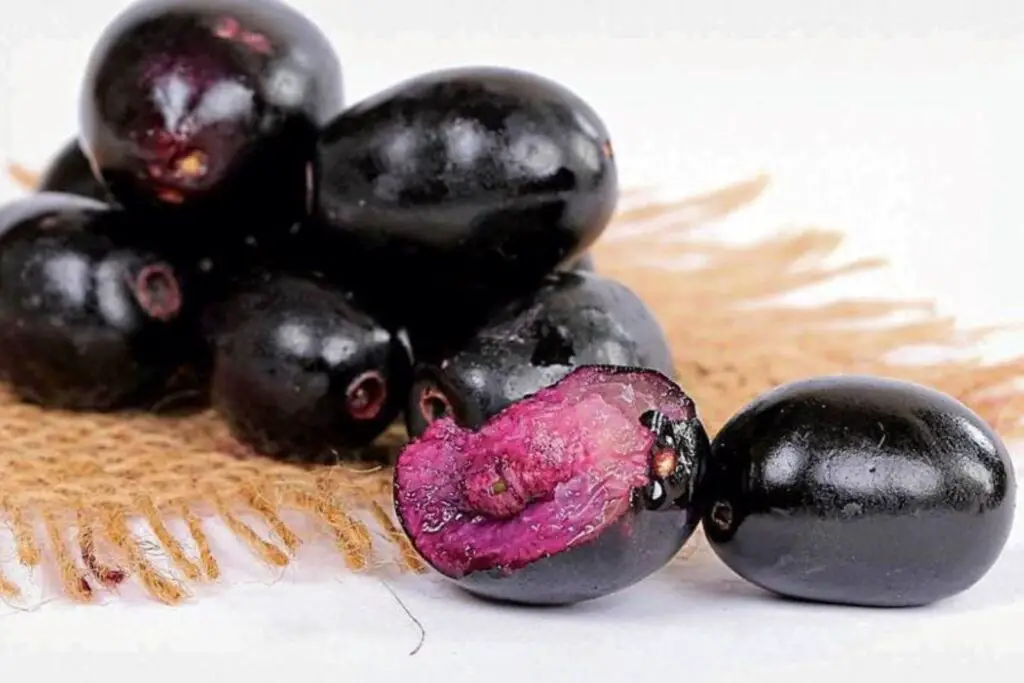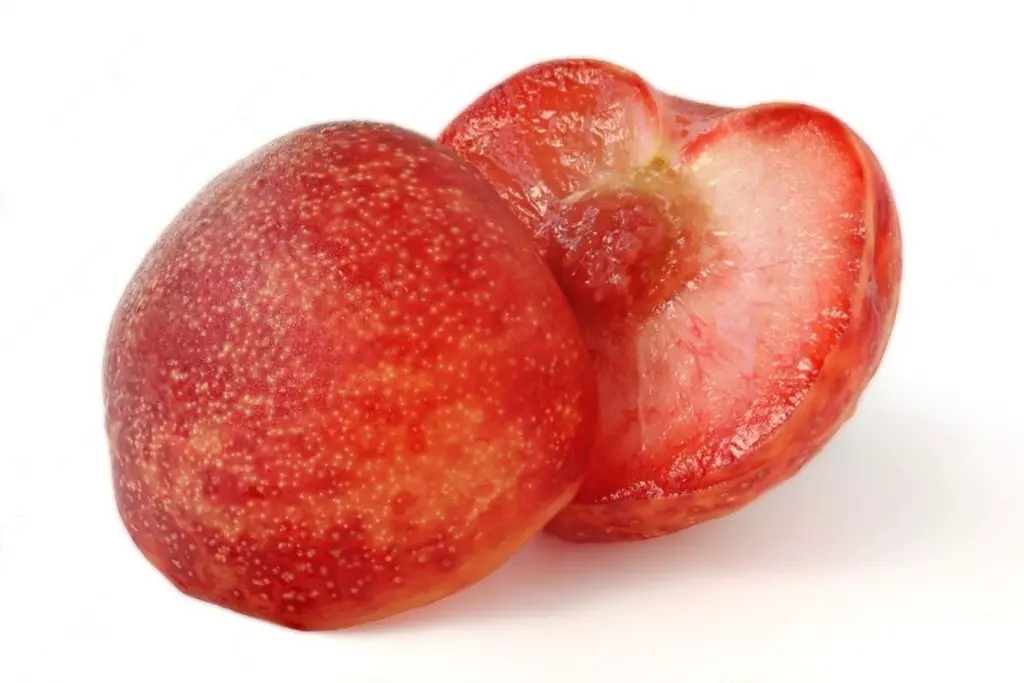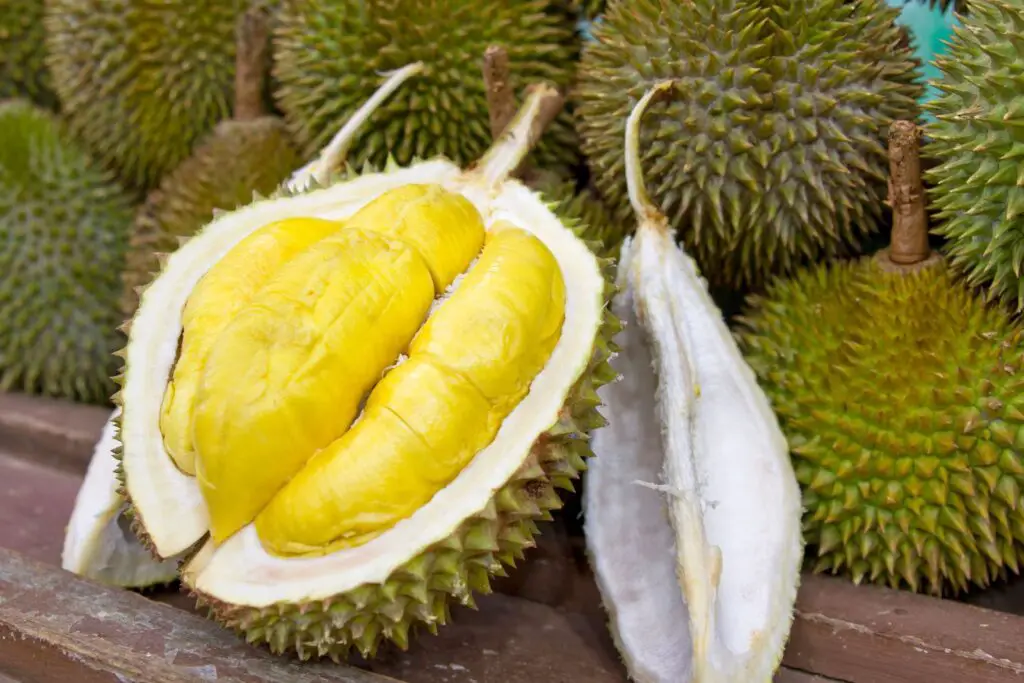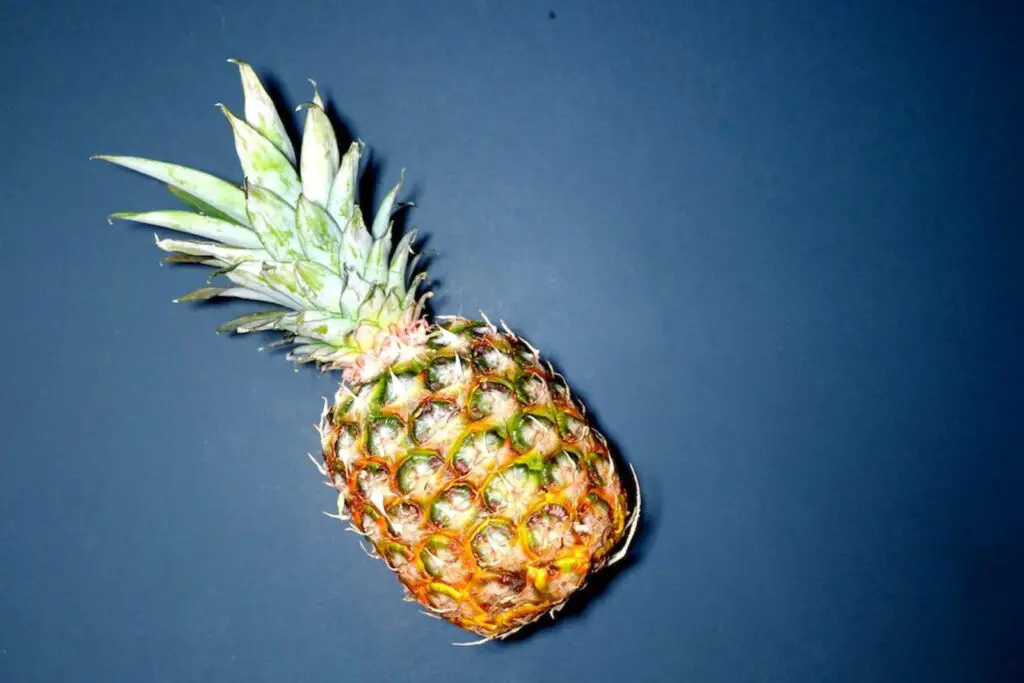
Meyer lemons, a hybrid between a regular lemon and a mandarin or orange, are prized for their sweet and floral flavor, making them a delightful addition to various culinary creations. These thin-skinned, slightly smaller lemons have gained popularity among home cooks and professional chefs alike. However, as with any seasonal fruit, their availability might be limited to specific times of the year. Freezing Meyer lemons is an excellent way to ensure you have a steady supply on hand even when they are out of season. By following a few simple steps, you can freeze Meyer lemons while preserving their juiciness and vibrant taste. This article presents a comprehensive guide on freezing Meyer lemons, allowing you to enjoy their delightful essence whenever you desire.
Here’s a step-by-step guide on how to freeze Meyer lemons:
Step 1: Choose fresh Meyer lemons
When it comes to freezing Meyer lemons, the quality of the fruit at the beginning is crucial to ensure that you end up with flavorful and delicious frozen lemons. Choosing fresh and ripe Meyer lemons is essential because their condition directly affects the taste and texture of the frozen product.
Firmness is an indicator of a fresh Meyer lemon. When you gently squeeze the lemon, it should feel firm but not hard. If the lemon feels soft or squishy, it may be overripe or starting to spoil, and freezing such lemons will not yield satisfactory results.
The bright and glossy skin of Meyer lemons is another sign of their freshness. A vibrant, shiny skin typically indicates that the fruit is still in good condition. On the other hand, a dull or wrinkled skin might be an indication of aging or improper storage.
Avoid using lemons with blemishes or signs of spoilage. Look for any mold, dark spots, or visible damage on the skin. Freezing lemons with these issues could result in off-flavors and compromise the overall quality of the frozen fruit.
Step 2: Wash and dry the lemons
Washing and drying the Meyer lemons before freezing them is an essential step to ensure that the frozen lemons remain clean and free from any contaminants. It also helps in preserving the quality of the fruit during the freezing process.
Thoroughly washing the lemons under cool running water is crucial because it removes any dirt, dust, or pesticides that might be present on the surface of the fruit. Even if the lemons appear clean, there may be microscopic particles that need to be rinsed off. This step is especially important if the lemons were purchased from a grocery store or farmers’ market, where they might have been handled by various people before reaching your kitchen.
Additionally, washing the lemons can help eliminate any potential residue from waxes or coatings that are sometimes applied to fruits to enhance their appearance and prolong shelf life. Removing these coatings ensures that the freezing process will not trap any unwanted substances along with the fruit.
After washing the lemons, patting them dry with a clean kitchen towel is essential to remove any excess moisture. Excess water on the surface of the lemons can lead to ice crystals forming during freezing, which may negatively impact the texture and flavor of the fruit. By drying the lemons thoroughly, you help prevent the formation of ice crystals and minimize the risk of freezer burn.
Having clean and dry Meyer lemons before freezing ensures that the natural flavors and aromas of the fruit are well-preserved during the freezing process. It also contributes to the overall quality of the frozen lemons, making them more suitable for a wide range of culinary applications, such as adding zest and juice to recipes or preparing refreshing beverages. Taking the time to wash and dry the lemons is a small but significant step in the process of freezing Meyer lemons and guarantees a better final product for your future culinary endeavors.
Step 3: Slice the lemons
Slicing the Meyer lemons before freezing serves several purposes and is a crucial step in preparing them for optimal freezing and later use.
Firstly, slicing the lemons into uniform and thin rounds or cutting them into wedges helps in the even distribution of flavor and allows for more versatile usage. Thin lemon slices or wedges can be easily incorporated into various dishes, such as salads, marinades, desserts, and beverages, as they will thaw and blend seamlessly into the recipes.
Secondly, uniform slicing ensures that all lemon pieces will freeze at a similar rate, promoting consistent freezing throughout. If the lemon slices or wedges vary significantly in size, some pieces may freeze faster than others, potentially leading to uneven freezing and affecting the overall quality of the frozen lemons.
Additionally, slicing the lemons exposes more surface area, which can aid in the freezing process. The increased surface area allows for faster freezing as more lemon flesh is exposed to the cold air in the freezer. This helps preserve the natural textures and flavors of the lemons, as quick freezing minimizes the formation of large ice crystals that could damage the fruit’s cell structure.
The decision to slice the lemons into rounds or wedges depends on personal preference and intended use. Round slices are great for infusing water, making lemon ice cubes, or adding a zesty touch to beverages. On the other hand, lemon wedges are often used in savory dishes, seafood, or to garnish certain cocktails.
Can I freeze whole Meyer lemons without slicing them?
While it is possible to freeze whole Meyer lemons, it is generally recommended to slice or wedge them before freezing. Slicing or wedging the lemons allows for quicker and more even freezing, preserving the fruit’s quality and facilitating easier portioning when using them later.
Step 4: Arrange on a baking sheet
Arranging the lemon slices or wedges in a single layer on a parchment paper-lined baking sheet is a crucial step in the freezing process that helps ensure the best possible results when preserving Meyer lemons.
The primary reason for laying the lemon pieces in a single layer is to facilitate faster and more even freezing. When the lemon slices or wedges are spread out and not touching each other, there is more surface area exposed to the cold air in the freezer. This exposure allows for quicker removal of heat from the lemons, leading to faster freezing times.
Faster freezing is essential because it helps preserve the quality of the fruit. When fruits freeze slowly, larger ice crystals can form inside the cells, which may cause cell walls to rupture upon thawing. This can result in a mushy texture and loss of flavor in the lemons. By freezing the lemon pieces quickly and efficiently, you minimize the formation of large ice crystals and help retain the natural texture and taste of the fruit.
Furthermore, ensuring that the lemon slices or wedges do not touch each other on the baking sheet is essential to prevent them from sticking together during freezing. If the lemon pieces are touching or overlapping, they may freeze together as a solid mass, making it challenging to separate them when you want to use just a portion. By keeping them spaced apart, you can easily remove the individual lemon pieces from the baking sheet once they are fully frozen and transfer them to storage containers without any hassle.
The parchment paper lining on the baking sheet serves as a non-stick surface, making it easier to handle the frozen lemon pieces after they are fully frozen. It also prevents the lemons from sticking to the baking sheet, ensuring they can be easily lifted off without leaving any residue behind.
Step 5: Pre-freeze the lemon slices
Pre-freezing the lemon slices, also known as flash-freezing, is a crucial step in the process of freezing Meyer lemons. This step ensures that the lemon slices freeze individually and solidly, preventing them from sticking together and forming clumps during long-term storage.
The term “flash-freezing” refers to the rapid freezing of small individual pieces of food at a low temperature. In this case, the lemon slices are spread out in a single layer on the baking sheet, and by placing them in the freezer for a few hours until they are frozen solid, each slice freezes quickly and independently.
The benefits of flash-freezing are twofold:
- Prevents clumping: By pre-freezing the lemon slices separately, they won’t be touching each other when they are frozen solid. This prevents them from sticking together, so you can easily remove as many slices as needed from the freezer without having to thaw and separate a clump of frozen lemons.
- Retains individual texture and flavor: Flash-freezing helps maintain the individual texture and flavor of each lemon slice. When fruits freeze slowly, ice crystals form, which can rupture the cell walls and lead to a mushy texture and loss of flavor. Flash-freezing, on the other hand, prevents the formation of large ice crystals, preserving the natural freshness and taste of each lemon slice.
Additionally, the short freezing time during the flash-freezing process ensures that the lemon slices don’t become partially thawed and refrozen, which could compromise their quality and contribute to freezer burn.
After the lemon slices are fully frozen during the flash-freezing process, you can then transfer them to storage containers or resealable plastic bags for long-term freezer storage. Since they are already individually frozen, you can easily take out just the amount you need for your recipes without defrosting the entire batch.
Step 6: Transfer to freezer-safe containers
Transferring the frozen lemon slices to freezer-safe containers or resealable plastic bags is a critical step to preserve the quality of the fruit during long-term freezer storage. Properly storing the frozen lemons in airtight containers helps prevent freezer burn and ensures that the lemon slices remain in excellent condition until you’re ready to use them.
Freezer-safe containers or resealable plastic bags are specifically designed to withstand the low temperatures of the freezer without cracking or becoming brittle. Using these containers ensures that the lemons are protected from exposure to air and moisture, which are the primary culprits of freezer burn.
Freezer burn occurs when the surface of frozen food comes into contact with air, causing the moisture in the food to evaporate. This results in the formation of ice crystals on the food’s surface, leading to dry, discolored, and off-flavored patches. By transferring the frozen lemon slices into airtight containers, you create a barrier that prevents air from reaching the fruit and helps maintain its moisture content and flavor.
Squeezing out as much air as possible from the containers or bags before sealing them is another crucial step to prevent freezer burn. Any trapped air inside the containers can still cause moisture to evaporate from the lemon slices, leading to potential freezer burn issues.
Here’s how to properly transfer and store the frozen lemon slices:
- Take the baking sheet with the frozen lemon slices out of the freezer.
- Quickly transfer the slices into the freezer-safe containers or resealable plastic bags. Work efficiently to minimize the time the lemons spend outside the freezer.
- Press down on the containers or bags gently to remove excess air, or use a vacuum sealer to remove the air completely.
- Seal the containers or bags tightly to create an airtight seal.
Step 7: Label the containers
Labeling the containers or bags with the current date when freezing Meyer lemons is a simple yet essential practice to help you keep track of their storage duration and ensure you use them within their optimal freshness period.
Meyer lemons, like any frozen food, have a limited storage life, and their quality can gradually decline over time. While they can be stored in the freezer for up to six months, it’s essential to use them within this timeframe to enjoy the best taste and texture.
By adding the date to the containers or bags, you create a reference point for when the lemons were frozen. This information allows you to know exactly how long the Meyer lemons have been in the freezer and when you should consider using them before their quality potentially begins to deteriorate.
The benefits of labeling the containers with the freezing date are as follows:
- Freshness monitoring: Having the date on the containers helps you monitor the freshness of the frozen lemons accurately. As time passes, you can keep track of how long the lemons have been in the freezer, enabling you to plan their use accordingly.
- Preventing food waste: With the date labeled on the containers, you are less likely to forget about the frozen lemons in the back of the freezer. This helps prevent food waste by ensuring you use them within their recommended storage period.
- Organizational convenience: Labeling the containers with the date adds organization to your freezer. It allows you to easily identify the frozen Meyer lemons among other items, saving you time and effort when searching for specific ingredients.
- Quality assurance: Knowing the freezing date ensures that you use the Meyer lemons while they are still at their best quality. As time passes, frozen fruits may experience changes in taste, texture, and color, so using them within the recommended storage time frame helps maintain their desirable characteristics.
When labeling the containers, you can use adhesive labels, write the date directly on the container or bag using a marker, or use freezer-safe tape. Make sure the label is clear and easily visible to avoid confusion later on.
Step 8: Store in the freezer
Storing the labeled containers of frozen Meyer lemons in the freezer is the final step in the process of preserving them for future use. Proper freezer storage is crucial for maintaining the quality and safety of the fruit throughout its storage period.
Here’s why proper freezer storage is essential for frozen Meyer lemons:
- Maintaining freshness: The cold temperature of the freezer slows down the natural deterioration processes of the lemons, including enzymatic reactions and microbial growth. Freezing helps preserve the natural flavors, textures, and nutrients of the lemons, ensuring they remain fresh and delicious until you’re ready to use them.
- Preventing freezer burn: Placing the labeled containers in the freezer at the recommended temperature of 0°F (-18°C) or lower helps prevent freezer burn. Freezer burn occurs when the frozen food is exposed to air, causing moisture to evaporate from the surface and resulting in dry, discolored, and off-flavored patches. The lower the freezer temperature, the slower the formation of large ice crystals, reducing the risk of freezer burn.
- Avoiding odors and cross-contamination: Proper freezer storage also prevents the absorption of odors from other foods in the freezer, which could affect the taste of the Meyer lemons. It also minimizes the risk of cross-contamination between different foods, ensuring the lemons retain their distinct and natural flavor.
- Organizational efficiency: Storing the labeled containers where they won’t be disturbed or crushed by other items helps maintain their structural integrity and makes it easier to locate them when needed. Keeping the freezer organized also prevents accidental damage to the containers or bags, preserving the quality of the frozen lemons.
When placing the labeled containers in the freezer, consider these tips:
- Leave enough space around the containers to allow cold air to circulate freely. Proper air circulation helps maintain a consistent freezer temperature and ensures even freezing throughout.
- Avoid overcrowding the freezer. Overcrowding can hinder the circulation of cold air, leading to temperature fluctuations and potential issues with food preservation.
- Try to position the containers away from the freezer door, as the temperature near the door can fluctuate more than in other areas of the freezer.
- Make sure the freezer is set to the recommended temperature of 0°F (-18°C) or lower. Keeping the freezer at this temperature ensures that the frozen lemons stay in top condition for an extended period.
How long can I store frozen Meyer lemons in the freezer?
Frozen Meyer lemons can be stored in the freezer for up to six months. Beyond this period, the quality of the lemons may gradually decline, and they may develop freezer burn or lose some of their natural flavors. It’s best to use them within the recommended timeframe for the best culinary experience.
Other related questions
How do I defrost meyer lemons?
To defrost Meyer lemons, transfer the frozen lemon slices or wedges to a plate or container and place them in the refrigerator. Allow them to thaw slowly and evenly for several hours or overnight. Alternatively, you can place the frozen lemons in a sealed plastic bag and immerse them in cold water for quicker thawing. Avoid using heat or microwaving to defrost Meyer lemons to preserve their flavor and texture.
Should I thaw frozen Meyer lemons before using them in recipes?
The method of using frozen Meyer lemons in recipes depends on your specific needs. For beverages and recipes where the lemon flavor can be readily infused, such as marinades or dressings, you can use the frozen lemons directly without thawing. For recipes requiring lemon zest or juice, thaw the lemon slices or wedges in the refrigerator or in cold water and extract the zest or juice as needed.
Can I refreeze meyer lemons?
Once Meyer lemons have been fully thawed, it is generally not recommended to refreeze them. Refreezing can lead to a loss of quality, texture, and taste. To maintain the best flavor and texture, it’s advisable to use the thawed Meyer lemons promptly after defrosting.
How do I know if the meyer lemons have gone bad after being frozen?
If Meyer lemons have gone bad after being frozen, there are some noticeable signs to look for. Inspect the lemons for changes in color, texture, and aroma. If they appear discolored, mushy, or emit an off-putting odor, it indicates spoilage. Additionally, freezer burn may manifest as dry, discolored patches on the lemons’ surface, leading to a loss of quality and flavor. If any of these signs are present, it’s best to discard the frozen Meyer lemons to avoid consuming potentially spoiled fruit.
Can I use frozen Meyer lemons in both sweet and savory dishes?
Absolutely! Frozen Meyer lemons can be used in a wide range of dishes, both sweet and savory. They can add a burst of citrus flavor to desserts, marinades, dressings, cocktails, and more. Get creative with your culinary endeavors and explore the versatility of these frozen gems in your favorite recipes.
Can I freeze the whole Meyer lemon and use it for garnish?
Freezing the whole Meyer lemon may alter the texture of the peel, making it less suitable for garnishing. For a more visually appealing garnish, it’s better to slice the lemons and freeze the slices individually. Thawed lemon slices can still be used for an attractive and flavorful garnish.
What is the best way to store Meyer lemons before freezing?
Before freezing Meyer lemons, store them in a cool, dry place away from direct sunlight. If you won’t be freezing them immediately, you can keep them fresh in the refrigerator for up to two weeks.
Can I add herbs or spices to the frozen Meyer lemons for additional flavor?
Yes, you can! You can enhance the flavor of the frozen Meyer lemons by adding herbs or spices before freezing. For example, you can place a sprig of fresh rosemary or a few mint leaves alongside the lemon slices in the container for a delightful herb-infused citrus taste.








